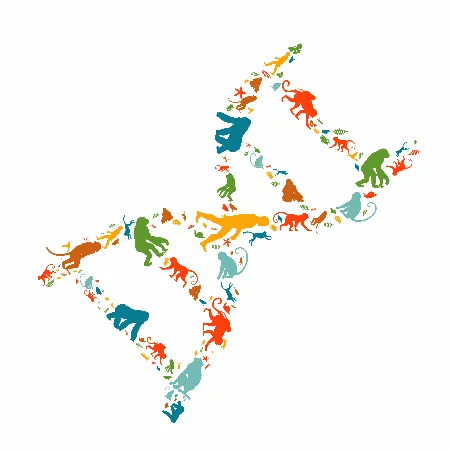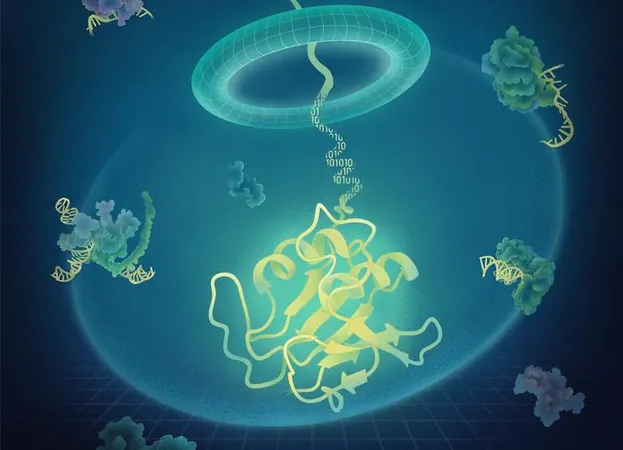
Unveiling the Hidden Powers of Transposable Elements in Human Development
2025-07-21
Author: Benjamin
What Are Transposable Elements?
Transposable elements (TEs) are repetitive DNA sequences that trace their origins back to ancient viruses and account for nearly half of our human genome. Once dismissed as mere 'junk' DNA, TEs are now recognized as crucial genetic switches that regulate nearby genes depending on the specific cell types.
Groundbreaking Study Uncovers New Roles for TEs
A groundbreaking study from Kyoto University, recently published in *Science Advances*, has taken a bold step forward in the understanding of TEs. This research, titled "A phylogenetic approach uncovers cryptic endogenous retrovirus subfamilies in the primate lineage," presents a novel annotation method using phylogenetic analysis and cross-species conservation to decode the regulatory roles of TEs in human development.
Led by Dr. Xun Chen, Dr. Guillaume Bourque, and Dr. Fumitaka Inoue, the study highlights the significance of a group of poorly classified long terminal repeat (LTR) subfamilies known as MER11A/B/C.
Discoveries That Could Change Our Understanding of Genetics
The findings indicated the existence of four 'new subfamilies,' suggesting a fresh perspective on roughly 20% of these repeated elements. Among the noteworthy revelations was the intermediate-aged MER11_G2/G3 family, which harbored multiple transcription factor motifs, like ZIC—vital for embryonic development—and TEAD, linked to cell proliferation. These motifs were not just random occurrences; they were conserved between humans and macaques, hinting at their functional importance before the split of these species.
Innovative Testing Unveils Regulatory Potential of MER11 Subfamilies
To substantiate the regulatory capabilities of these MER11 sequences, researchers employed an innovative technique known as the lentivirus-based massively parallel reporter assay (lentiMPRA). This cutting-edge methodology evaluates enhancer functionality through high-throughput testing on nearly 7,000 MER11 sequences.
The analysis showcased that the youngest subfamily, MER11_G4, was particularly potent in activating gene expression, with variations noted across human, chimpanzee, and macaque sequences. Intriguingly, certain sequences in humans and chimpanzees developed mutations enhancing their regulatory abilities, particularly during stem cell development.
An Insight into Ape-Specific Genetic Mechanisms
A significant finding was the deletion of a SOX motif in human MER11_G4 sequences, a change that occurred post-divergence from macaques. The SOX15 and SOX17 genes are crucial for human primordial germ cell differentiation and tissue-specific gene regulation. This research suggests that these ape-specific motifs in the MER11 subfamilies could drastically influence gene developmental networks in a manner unique to each lineage.
The Future of Genetic Research and TE Annotation
Looking to the future, the authors propose that employing epigenetic and functional profiles, as demonstrated in this study, could forge new paths for TE classification and annotation. This could open doors to unprecedented insights into genomic regulation and developmental biology.









 Brasil (PT)
Brasil (PT)
 Canada (EN)
Canada (EN)
 Chile (ES)
Chile (ES)
 Česko (CS)
Česko (CS)
 대한민국 (KO)
대한민국 (KO)
 España (ES)
España (ES)
 France (FR)
France (FR)
 Hong Kong (EN)
Hong Kong (EN)
 Italia (IT)
Italia (IT)
 日本 (JA)
日本 (JA)
 Magyarország (HU)
Magyarország (HU)
 Norge (NO)
Norge (NO)
 Polska (PL)
Polska (PL)
 Schweiz (DE)
Schweiz (DE)
 Singapore (EN)
Singapore (EN)
 Sverige (SV)
Sverige (SV)
 Suomi (FI)
Suomi (FI)
 Türkiye (TR)
Türkiye (TR)
 الإمارات العربية المتحدة (AR)
الإمارات العربية المتحدة (AR)